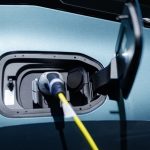The rapid deployment of advanced underwater technology is enabling marine researchers to detect significant changes within ocean ecosystems faster than ever before. A recent investigation by Advanced Navigation, using its Hydrus underwater drones, illustrates how automated and high-resolution surveying equipment can support efforts to address threats to coral reefs. As rising sea temperatures and environmental pressures intensify globally, such coordinated missions offer more accurate data for scientists and policymakers. The Hydrus project at Hall Bank reef demonstrates how private firms and consulting partners like O2 Marine combine expertise and technology to deliver actionable findings for conservation work.
Other reports about Advanced Navigation’s Hydrus missions noted successful uses of this AUV in the Florida Keys, where large-scale deployments produced a high rate of operational success and contributed to ecological monitoring for government agencies. Previous coverage primarily focused on the drones’ navigational capabilities and ability to generate detailed topographical data. The Western Australia survey, however, places added emphasis on the acute environmental insights produced and the collaborative dimension between industrial and conservation-oriented organizations, which marks a slight shift toward more practical applications in urgent ecological contexts.
How Did Hydrus Conduct the Coral Survey?
Three Hydrus autonomous underwater vehicles were tasked with surveying Hall Bank reef, situated off the coast of Fremantle. This location, being outside the typical range for coral reefs, posed specific logistical and environmental challenges. Equipped with geo-referenced imaging and 4K video, the AUVs systematically documented the seabed, allowing marine scientists to assess the impacts of coral bleaching and fragmentation.
“One major hurdle was maintaining accurate positioning in areas with weak GNSS signals or reduced acoustic performance, especially near coral reefs,”
explained Advanced Navigation’s senior AI engineer, Alec McGregor. Consistent coverage and high-quality imagery required real-time adjustments, countering environmental variability like current-induced drift.
What Was the Partnership with O2 Marine?
Collaboration between Advanced Navigation and O2 Marine centered on enhancing marine environmental assessment and monitoring. O2 Marine’s goal is to improve the precision of their sustainability analyses by working with robust data sources. Hydrus’s capabilities were showcased in this joint effort as the AUV provided comprehensive data for a 3D digital twin of the Hall Bank seabed. After completing the underwater survey, Advanced Navigation focused on processing the collected data, enhancing its value for impact assessments. O2 Marine now plans to integrate Hydrus into various global conservation and project evaluation tasks.
How Is AI Integrated in Hydrus, and What Are the Next Steps?
Advanced Navigation is expanding Hydrus’s onboard intelligence using AI technologies such as convolutional neural networks for real-time object detection and classification. The company is considering large language models to upgrade mission-planning and post-processing tasks. Future enhancements to Hydrus involve both software—AI-driven navigation, adaptive behaviors—and hardware changes to withstand deeper and harsher marine environments. Continuous field testing is expected to further refine the reliability and resilience of the system before broader commercial use.
The findings from the Hall Bank mission, along with parallel deployments in places like the Florida Keys, reveal how AUVs help scale the frequency and coverage of coral monitoring without relying on large surface vessels. With advanced automation and cost-efficiency, such approaches can deliver timely information critical for informed ecological management. The capability to generate digital twins of underwater environments also supports a new level of insight for stakeholders in science and conservation.
Collecting precise, high-resolution underwater data is increasingly central to responding to marine ecosystem stress. Advanced Navigation’s cooperation with O2 Marine shows that integrating autonomous technologies can improve real-time monitoring and long-term data trends for coral health. For organizations engaged in ocean conservation or coastal infrastructure, leveraging AUV-based platforms like Hydrus offers a scalable, cost-effective tool for ongoing assessment. As environmental and technological trends converge, real-world adoption will depend on operational ease, adaptability of platforms, and the steady flow of reliable data into broader ecosystem management strategies.










